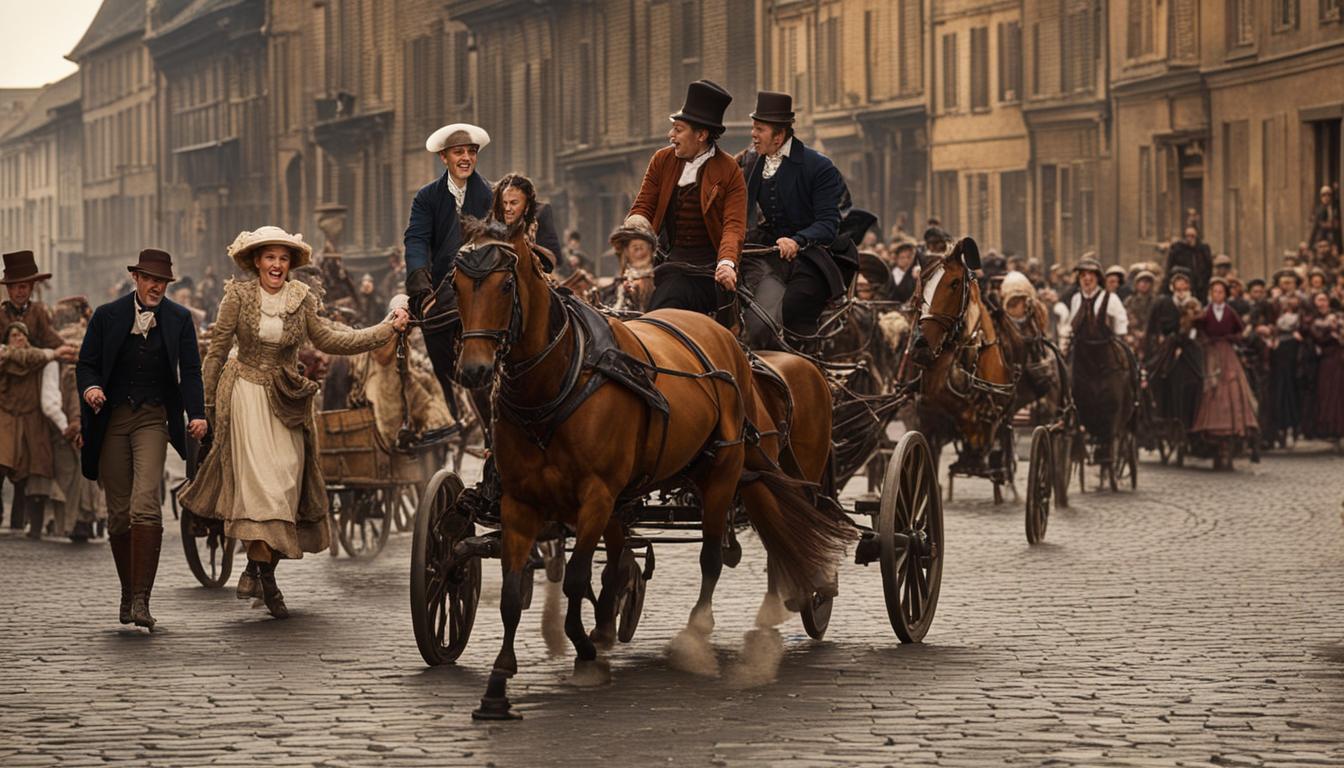Welcome to the fascinating world of roller skating! In this article, we’ll take you on a journey through the history and evolution of roller skates, from their humble beginnings to their current status as a popular recreational activity and sport. Discover how roller skates revolutionized transportation and became a symbol of freedom and self-expression.
Roller skating has a long and storied history, dating back to the 18th century. It all started when inventors and innovators sought to recreate the sensation of ice skating on dry land. The first recorded instance of roller skates being used in a performance was in 1743, when actors attached wheels to their footwear to glide across the stage. However, it wasn’t until the 1760s that inventor John Joseph Merlin designed the first roller skates in London. Although his invention lacked brakes and balance, his pioneering spirit set the stage for future innovations.
Fast forward to 1863, when another inventor named James Plimpton revolutionized roller skates by introducing the quad skate design. Quad skates, featuring two pairs of wheels placed side by side for improved stability, quickly gained popularity and marked a significant milestone in roller skate development. From there, roller skating continued to evolve, giving rise to various sports disciplines and becoming a cherished pastime for people of all ages.
So, join us as we delve into the rich history, innovation, and social impact of roller skating. From its early role in transportation to its significance in art and literature, roller skating has captured the hearts and imaginations of people around the world.
Contents
- 1 A Brief History of Roller Skating
- 2 Roller Skating as a Sport
- 3 Roller Skating as a Mode of Transportation
- 4 Roller Skating and Social Movements
- 5 Roller Skating in Art and Literature
- 6 Roller Skating: The Present and the Future
- 7 Conclusion
- 8 FAQ
- 8.1 When were roller skates first invented?
- 8.2 Who revolutionized roller skates in 1863?
- 8.3 When did roller skating gain popularity?
- 8.4 What sports disciplines are associated with roller skating?
- 8.5 Was roller skating ever used as a mode of transportation?
- 8.6 How has roller skating been connected to social movements?
- 8.7 How has roller skating been represented in art and literature?
- 8.8 How is roller skating thriving in the present day?
- 8.9 What is the future of roller skating?
- 9 Source Links
Key Takeaways:
- Roller skates were first invented in the 18th century as a way to mimic the sensation of ice skating.
- John Joseph Merlin designed the first roller skates in the 1760s, laying the foundation for future innovations.
- James Plimpton revolutionized roller skates in 1863 with the quad skate design, improving stability and paving the way for the sport’s development.
- Roller skating has a rich history, experiencing periods of popularity and adaptation throughout the years.
- Roller skating has become a beloved pastime, a platform for social change, and a source of inspiration in various artistic mediums.
A Brief History of Roller Skating
Roller skating has a rich and dynamic history that spans several centuries. Throughout the years, roller skate technology has evolved, leading to significant developments in the sport and its popularity. Let’s take a closer look at the timeline of roller skate development and the key milestones in roller skate history.
The 1880s to the 1910s: The Rise of Roller Skating
In the late 19th and early 20th centuries, roller skates were mass-produced, bringing roller skating to the masses. Skating rinks became popular gathering places for people in Europe, North and South America, and Australia, fostering a sense of community and fun.
The 1930s to the 1950s: The Golden Era of Roller Skating
During the 1930s to the 1950s, roller skating experienced another surge in popularity. Skating rinks flourished, and electric organ music became the soundtrack of roller skating. It was a time of joy and camaraderie, with roller skating becoming a favorite pastime for people of all ages.
“Roller skating provided an escape from the troubles of daily life. It was a carefree activity that brought people together and created lasting memories.” – Roller skate enthusiast
The 1970s: The Rise of Roller Disco
The 1970s brought about the cultural phenomenon known as roller disco. Roller skating and disco music became closely intertwined, creating a vibrant and energetic atmosphere. Roller disco embraced diversity and was embraced by Black and gay skaters, breaking down barriers and challenging societal norms.
The 1990s: The Emergence of Inline Skating
In the 1990s, inline skating gained popularity, offering a new form of roller sports. Inline skates, with their sleek design and maneuverability, appealed to thrill-seekers and fitness enthusiasts. This shift in roller skate technology led to a decline in traditional roller skating in the early 21st century.
The COVID-19 Pandemic: Roller Skating Makes a Comeback
The COVID-19 pandemic sparked a resurgence of roller skating. With restrictions on indoor activities, people turned to roller skating as a fun and socially-distanced outdoor activity. Roller skating provided an escape, a way to stay active, and an opportunity to connect with others while adhering to safety guidelines.
As roller skating continues to evolve, it remains a beloved sport and recreational activity for people worldwide. From its humble beginnings to its resurgence in the modern era, roller skating has captured the hearts of many and continues to bring joy and excitement to individuals of all ages.
Roller Skating as a Sport
Roller skating has come a long way since its invention in the 18th century, evolving into various sports disciplines that have attracted athletes and enthusiasts from different backgrounds. Today, roller skating encompasses a wide range of athletic endeavors, offering an exciting and competitive platform for individuals to showcase their skills and passion.
Speed Skating: The Need for Speed
If you have a need for speed, then speed skating is the sport for you. This form of roller skating involves racing on inline or quad skates around a track, with competitors striving to achieve the fastest lap times. Speed skaters utilize specialized equipment, such as low-profile wheels and aerodynamic suits, to maximize their velocity and glide effortlessly across the track.
Roller Hockey: The Thrill of Team Sports
Inspired by its ice counterpart, roller hockey is a dynamic team sport played on roller skates. With a combination of speed, skill, and strategy, players maneuver the ball using hockey sticks, aiming to score goals while defending their own net. Roller hockey requires coordination, teamwork, and quick decision-making, making it an exhilarating sport to watch and play.
Roller Derby: Breaking Boundaries and Challenging Norms
Roller derby has gained worldwide popularity in recent years, emerging as a sport that challenges traditional gender norms and stereotypes. In roller derby, two teams of skaters compete on a track, using speed, agility, and physicality to prevent the opposition from scoring points. This high-energy sport celebrates strength, athleticism, and camaraderie, empowering athletes and fostering an inclusive and supportive community.
Figure Skating: Grace and Artistry on Wheels
Figure skating combines technical precision with artistic expression, showcasing the beauty and grace of roller skating. Skaters perform intricate choreography, executing spins, jumps, and intricate footwork, all while maintaining perfect balance and control. Figure skating on wheels demands poise, flexibility, and creativity, captivating audiences with its elegance and skill.
Aggressive Quad Skating: Pushing the Limits
For those seeking an adrenaline rush, aggressive quad skating is the perfect choice. This extreme sport involves performing daring tricks, jumps, and grinds on ramps, rails, and other obstacles. Aggressive skaters push the boundaries of what’s possible on four wheels, defying gravity and showcasing their creativity and fearlessness.
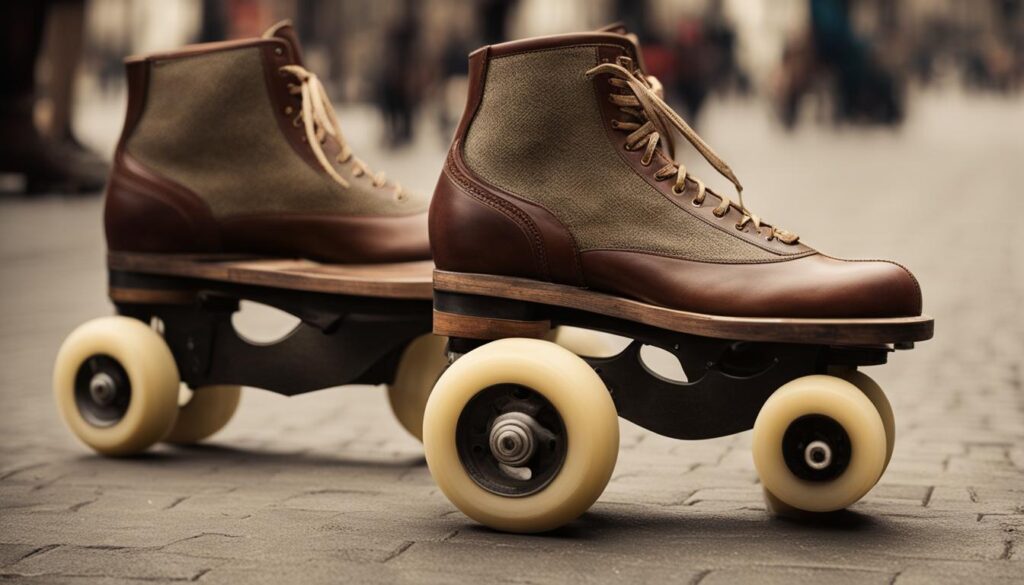
Whether you’re racing, competing as a team, challenging societal norms, expressing artistry, or pushing the limits, roller skating as a sport offers a diverse and thrilling range of options. Skaters from all walks of life come together to celebrate their shared love for roller skating, forming a vibrant and inclusive community of athletes who continue to push the boundaries of what’s possible on wheels.
Roller Skating as a Mode of Transportation
Roller skating has not only served as a popular recreational activity but also as a potential mode of transportation. Inventors and visionaries in the late 19th and early 20th centuries saw the roller skate’s potential for commuting and explored its use for getting from one place to another.
In a 1917 issue of Scientific American, authors even suggested using roller skates for daily work commutes, highlighting their convenience and portability. The roller skate transportation invention caught the attention of individuals looking for a novel way of getting around.
However, roller skating as a viable transportation method never fully took off. Despite the innovation and forward-thinking approach of early roller skate enthusiasts, other forms of transportation overshadowed its practicality.
Nevertheless, the exploration of roller skates as a means of transportation showcases the ingenuity of inventors and their willingness to push boundaries. It demonstrates how roller skate technology has evolved over time, even inspiring ideas that may not have come to fruition but still showcase the spirit of innovation.
Roller Skate Technology Timeline
| Year | Development |
|---|---|
| 1743 | First recorded use of skates in a performance |
| 1760s | John Joseph Merlin invents the first roller skates |
| 1863 | James Plimpton revolutionizes roller skates with quad skates |
| Late 19th to early 20th century | Exploration of roller skates as a mode of transportation |
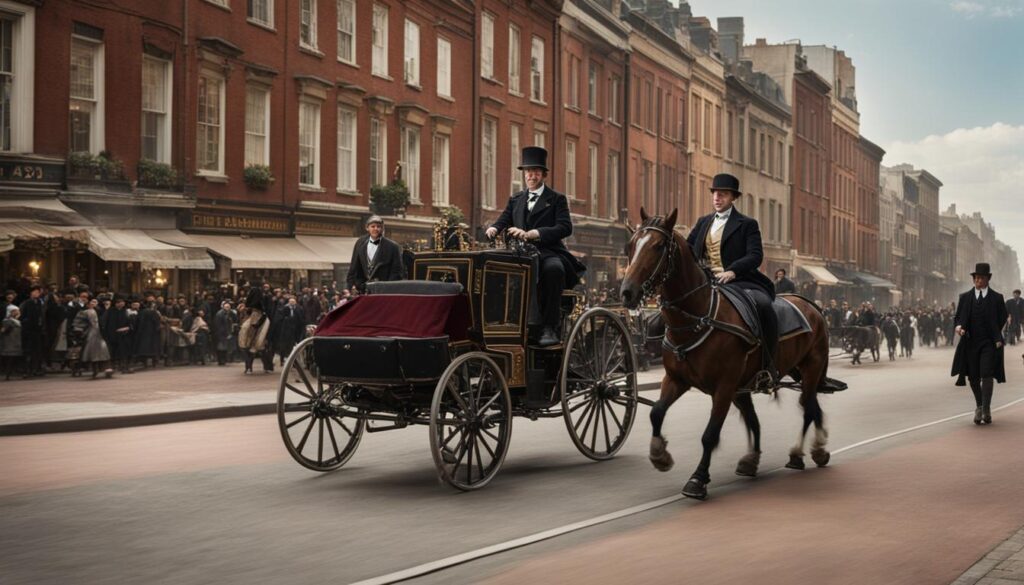
“Roller skating, with its compact design and portability, offers a unique opportunity for short-distance commuting. The roller skate technology timeline signifies the ingenuity of inventors, who explored unconventional transportation solutions.” – Scientific American, 1917
Roller Skating and Social Movements
Throughout its history, roller skating has been intertwined with social movements and marginalized communities.
Black Americans have played a significant role in roller skating, using it as a means of protest against segregated rinks and advocating for equality. One notable example is the African American skaters in Chicago who fought against discriminatory admission policies, leading to the development of unique skating styles associated with specific cities. This cultural expression and resistance through roller skating showcased the power of community and solidarity in challenging institutional racism.
“Roller skating gave black people the opportunity to defy gravity, without having to worry about the external hazards they might face on the sidewalks or the streets. … And it was really black art at its finest.”
– Malik “Kwasei” Abdullah, Skater and Cultural Historian
The LGBT community has also found a home in roller derby, a sport that challenges traditional notions of athleticism, femininity, and sensuality. Roller derby embraces individuality and provides a space for diverse identities, fostering inclusivity and acceptance. Skaters from the LGBTQIA+ community have used roller derby as a platform to express themselves, break down barriers, and promote equality.
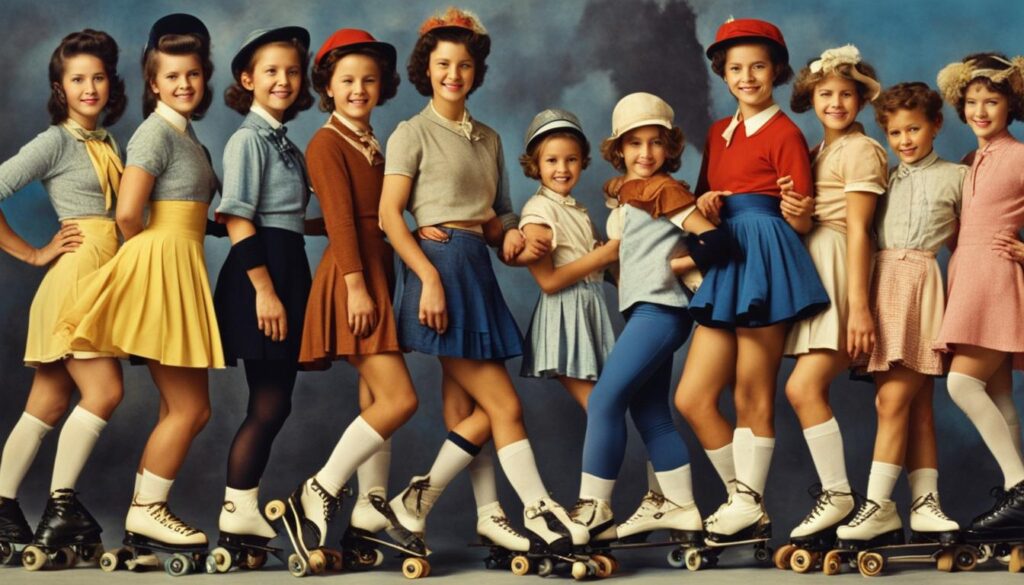
Roller skating has provided a platform for empowerment, inclusivity, and the celebration of diversity, making it a symbol of resistance and unity. By embracing roller skating, individuals and communities have the opportunity to come together, challenge societal norms, and create positive change. It is through these movements that roller skating has become more than just a recreational activity, but a catalyst for social progress.
Roller Skating in Art and Literature
Roller skating has ignited the creative minds of artists and writers alike, serving as a muse for exploring profound themes of identity, othering, and assimilation. Its symbolism as a means of navigation through life and liberation from societal norms has found its place in literature, resonating with readers who seek inspiration and empowerment.
Artists across disciplines have also found inspiration in roller skating, incorporating it into their works as a canvas for their creativity and a tool for conveying powerful messages. One such artist is marine artist Wyland, whose captivating pieces not only showcase the beauty of the ocean but also highlight the importance of environmental conservation. In his artwork, roller skating seamlessly harmonizes with marine life, capturing the viewer’s imagination and drawing attention to the need for preserving our planet’s natural wonders.
Roller skating’s presence in art and literature is a testament to its cultural significance and the impact it has had on society. Through the strokes of a brush or the rhythm in the lines of prose, roller skating continues to inspire and evoke a sense of wonder and possibility.
Exploring Roller Skating in Literature:
“She glided through life’s ups and downs, her roller skates propelling her forward, defying gravity and societal restrictions. With each turn, she discovered the freedom to be herself, unapologetically, leaving a trail of transformed pages in her wake.”
– Excerpt from “The Skater’s Journey” by Jane Miller
Famous Works of Art Featuring Roller Skating:
| Artwork | Artist | Description |
|---|---|---|
| “Rolling in Harmony” | Anna Chen | An enchanting painting depicting roller skaters gracefully gliding together, symbolizing the beauty of unity and connection. |
| “Wheels of Freedom” | Carlos Ruiz | A vibrant mural incorporating roller skating into a larger narrative of liberation and breaking free from societal constraints. |
Roller Skating: The Present and the Future
Roller skating has experienced a remarkable resurgence in popularity in recent years, with a growing community of enthusiastic skaters. It offers a unique blend of fun, exercise, and self-expression that appeals to people of all ages and backgrounds. As we look to the future, roller skating holds great potential for further innovation and development, shaping the sport in exciting new ways.
Roller skating’s enduring appeal lies in its ability to bring people together and create a sense of community. It embraces diversity and inclusivity, providing a space where individuals from all walks of life can connect and celebrate their shared passion for the sport. Whether you’re a beginner, a seasoned skater, or someone rediscovering the joy of roller skating, you’ll find a warm and welcoming community that encourages personal growth and empowerment.
As roller skating evolves, we can expect to see continued advancements in technology that enhance the skating experience. From improved skate designs to cutting-edge safety features, innovation will play a key role in shaping the future of roller skating. These developments will not only make skating more enjoyable but also ensure the safety and well-being of skaters.
With the ongoing integration of technology, roller skating is set to embrace the digital age. From smart skates that track performance metrics to virtual reality skating experiences, the possibilities are vast. These innovations will not only add a new layer of excitement to the sport but also provide opportunities for skaters to engage with each other in new and immersive ways.
But roller skating is not just about technological advancements; it’s also about preserving the rich history and traditions of the sport. While embracing innovation and progress, it’s important to honor the origins of roller skate development and appreciate the pioneers who paved the way for the modern roller skating we enjoy today.
“Roller skating combines the thrill of movement with the freedom of self-expression. It brings people together and allows them to create lasting memories. It’s a sport that transcends boundaries and encourages personal growth. The future of roller skating holds endless possibilities, and I’m excited to see where it takes us.” – Skater testimonial
The Benefits of Roller Skating
Let’s take a closer look at some of the benefits that roller skating offers:
- Fun and enjoyment: Roller skating is an exhilarating and enjoyable activity that brings joy to both individuals and families.
- Physical fitness: Skating is a fantastic way to get active and improve cardiovascular health, strength, and coordination.
- Self-expression: Roller skating allows individuals to express themselves creatively through their movements, style, and choice of music.
- Community and social connection: Skating rinks and skate parks provide a space for people to connect, make friends, and build a supportive community.
- Mental well-being: Roller skating is not only a physical activity but also a great way to relieve stress, boost mood, and improve mental well-being.
Whether you’re skimming the roller skate history or eagerly looking forward to the future of roller skating, one thing is certain: roller skating holds a special place in our hearts and continues to captivate new generations. So grab your skates, join the movement, and experience the exhilarating world of roller skating.
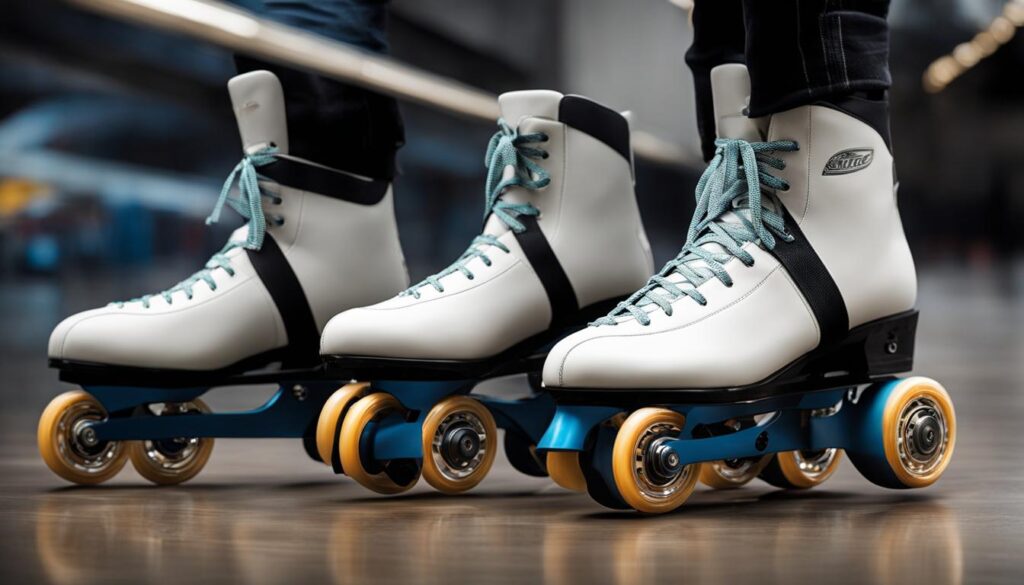
Conclusion
Roller skating has come a long way since its humble beginnings in the 18th century. From the invention of the first roller skate by John Joseph Merlin to the emergence of various sports disciplines, roller skating has transformed into more than just a recreational activity. It has become a beloved pastime, a source of inspiration for artists, and a catalyst for social change.
Throughout its history, roller skating has continuously evolved, adapting to the changing times and embracing innovation. Roller skating rinks became popular gathering places, bringing communities together and fostering a sense of camaraderie. It also provided opportunities for empowerment, allowing individuals to showcase their athleticism and creativity.
As roller skating continues to captivate the hearts and minds of people today, its rich history and ongoing innovation set the stage for an exciting and inclusive future. Roller skating has proven to be a symbol of unity and resistance, challenging societal norms and celebrating diversity. So, if you’re ready for some fun and adventure, grab your skates and join the roller skating revolution. The possibilities on wheels are endless!
FAQ
When were roller skates first invented?
Roller skates were first invented in the 1760s by John Joseph Merlin in London.
Who revolutionized roller skates in 1863?
James Plimpton revolutionized roller skates in 1863 by designing quad skates.
When did roller skating gain popularity?
Roller skating gained popularity from the 1880s to the 1910s and again in the 1930s to 1950s.
What sports disciplines are associated with roller skating?
Roller skating is associated with sports disciplines such as speed skating, roller hockey, roller derby, figure skating, and aggressive quad skating.
Was roller skating ever used as a mode of transportation?
Roller skating was explored as a mode of transportation in the late 19th and early 20th centuries, but it never fully took off.
Roller skating has been intertwined with social movements, with Black Americans protesting segregated rinks and the LGBT community challenging traditional notions of athleticism in roller derby.
How has roller skating been represented in art and literature?
Roller skating has been used as a metaphor in literature and has been incorporated into artworks as a canvas for creativity and messages of environmental conservation.
How is roller skating thriving in the present day?
Roller skating has experienced a resurgence in popularity, attracting a growing community of enthusiasts and providing a space for fun, exercise, and self-expression.
What is the future of roller skating?
As roller skating continues to evolve, it holds the potential to inspire further innovations and advancements, shaping the future of the sport.

